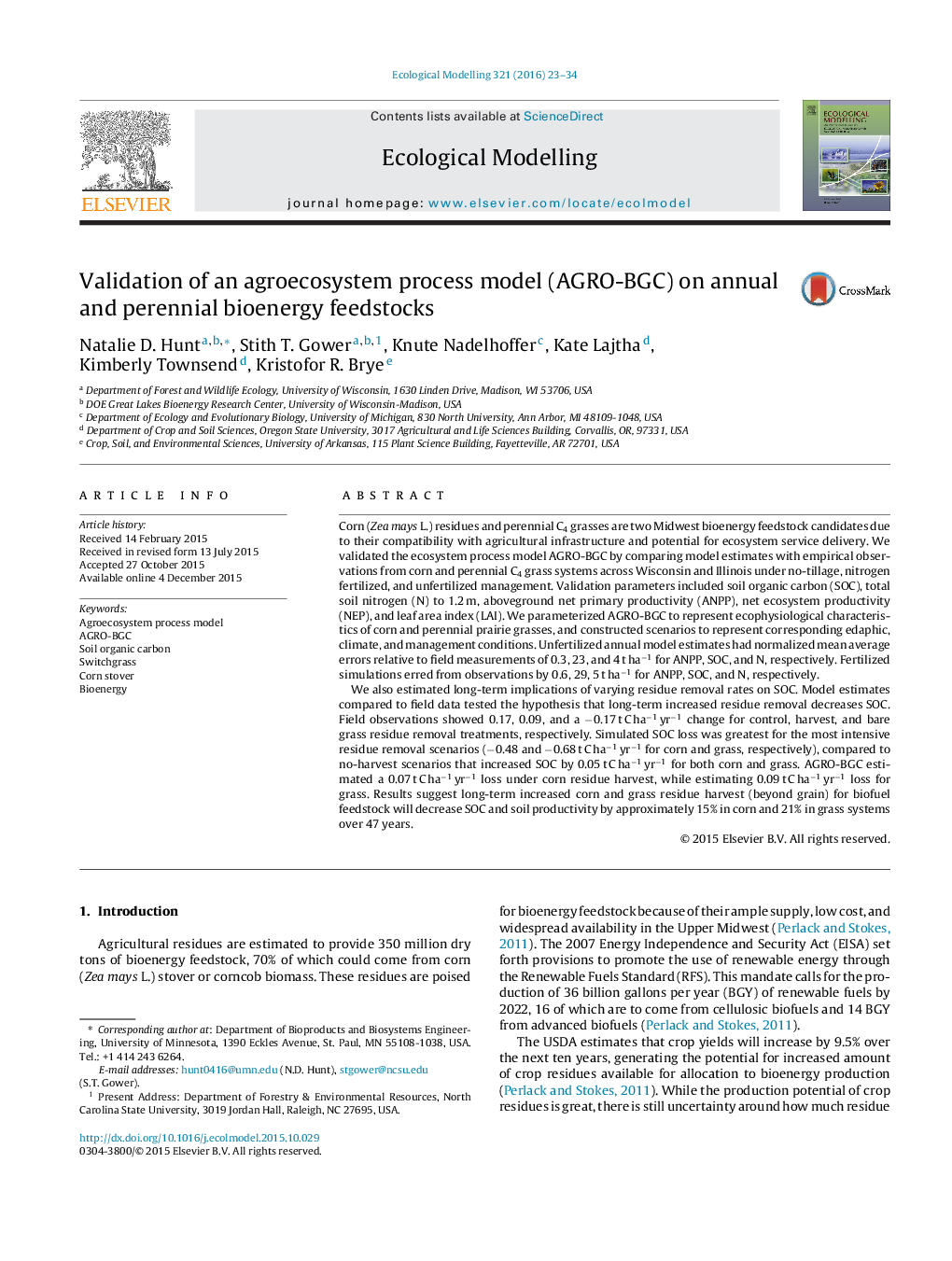| Article ID | Journal | Published Year | Pages | File Type |
|---|---|---|---|---|
| 6296198 | Ecological Modelling | 2016 | 12 Pages |
Abstract
We also estimated long-term implications of varying residue removal rates on SOC. Model estimates compared to field data tested the hypothesis that long-term increased residue removal decreases SOC. Field observations showed 0.17, 0.09, and a â0.17 t C haâ1 yrâ1 change for control, harvest, and bare grass residue removal treatments, respectively. Simulated SOC loss was greatest for the most intensive residue removal scenarios (â0.48 and â0.68 t C haâ1 yrâ1 for corn and grass, respectively), compared to no-harvest scenarios that increased SOC by 0.05 t C haâ1 yrâ1 for both corn and grass. AGRO-BGC estimated a 0.07 t C haâ1 yrâ1 loss under corn residue harvest, while estimating 0.09 t C haâ1 yrâ1 loss for grass. Results suggest long-term increased corn and grass residue harvest (beyond grain) for biofuel feedstock will decrease SOC and soil productivity by approximately 15% in corn and 21% in grass systems over 47 years.
Related Topics
Life Sciences
Agricultural and Biological Sciences
Ecology, Evolution, Behavior and Systematics
Authors
Natalie D. Hunt, Stith T. Gower, Knute Nadelhoffer, Kate Lajtha, Kimberly Townsend, Kristofor R. Brye,
